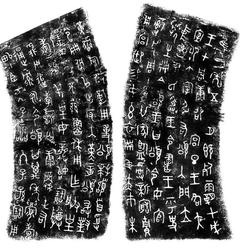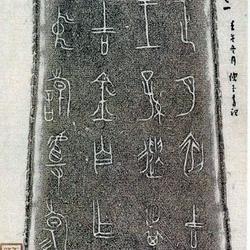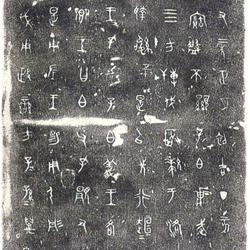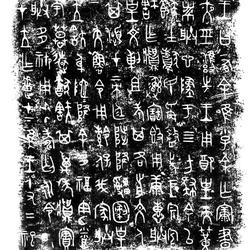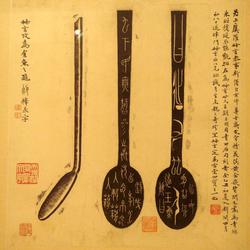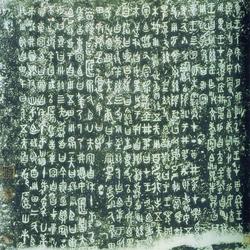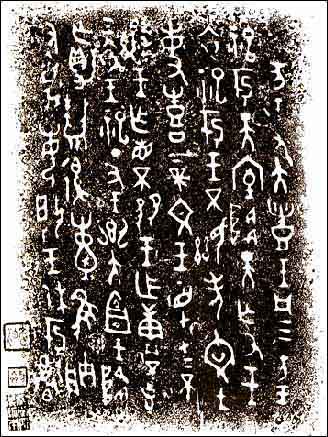
Rubbings of the Death Gui
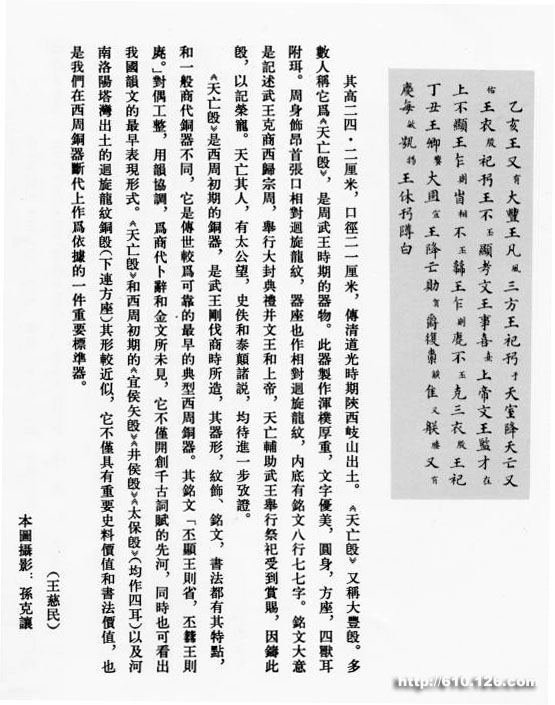
It is 24.2 centimeters high and 21 centimeters in diameter. It is said to have been unearthed in Qishan, Shaanxi during the Daoguang period of the Qing Dynasty. "The Death Gui" is also known as the Dafeng Gui. Most people call it "The Death Gui", an artifact from the period of King Wu of Chang Zhou Dynasty. This vessel is simple, thick, and has beautiful characters. It has a round body, a square seat, and four animal ears with urns. The whole body is decorated with a dragon pattern that rotates opposite to the mouth of the head. The base is also decorated with a dragon pattern that rotates opposite to each other. There is an inscription with eight lines and seventy-seven characters on the inner bottom. The main idea of the inscription is that King Wu conquered Shang and returned to the West to return to Zhou Dynasty. He held a great sealing ceremony and worshiped the king and his god. Tianshu assisted King Wu in performing sacrifices and was rewarded. Therefore, he cast this Yin to commemorate his honor and favor. When the person dies in heaven, there is hope for Tai Gong. The theories of Shi Yi and Tai Ying need to be further verified. "Heaven's Death Gui" is a bronze vessel from the early Western Zhou Dynasty. It was made when King Wu first conquered the Shang Dynasty. Its shape, decoration, inscriptions and calligraphy all have its own characteristics. It is different from other bronze vessels from the Shang Dynasty. It is the earliest and more reliable one handed down from generation to generation. A typical Western Zhou bronze vessel. Its inscription "The king of Pi County is the province, and the king of Pi is the province." The parallelism is neat and the rhyme is coordinated, which is unprecedented in the inscriptions and bronze inscriptions of the Shang Dynasty. It not only pioneered the poetry of the ages, but also showed the earliest expression of Chinese rhyme. "Heaven's Death Gui" and "Yihou Ya Gui", "Jinghou Gui" and "Taibao Gui" in the early Western Zhou Dynasty (all made of four ears), as well as the bronze Yin with swirling dragon pattern unearthed in Tawan, Luoyang, Henan (with a square base attached to the bottom). It is relatively similar. It not only has important historical material value and calligraphy value, but also an important standard instrument that we use as a basis for dating Western Zhou bronzes.

